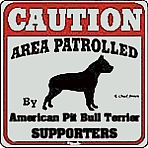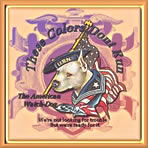by @gamedogs
Concrete Water Bowl Instructions
These are the original and best "how-to" instructions for making quality concrete water bowls for dogs.
This free step-by-step concrete dog bowl instruction guide is offered at no charge, but with absolutely no warranty.

What you'll need:
Optional, but advised:
Approximate total time to complete: 3 hours
Note: It is best to make these bowls when it will be mostly clear and no lower than 50-55° nor higher than about 85-90° for at least two days.
Note: Some people use cement for their dog bowls but I think concrete makes them more durable in climate extremes.
Note: These homemade concrete bowls could also be used for cats, horses, ponies, goats, chickens, and other pets and animals.
IMPORTANT: Please be sure to read through and thoroughly understand this entire how-to guide before starting!

Receipt for the 20 inch planter tub and concrete:

The plastic bowls that I got from the dollar store. They've sold these or something similar forever:


Cut the rim off the bowl as shown here (I use straight tin snips), leaving the edge flared out so it will fit flush with the bottom of the tub:

Some Walmarts still have this style of stainless steel bowl, which is the best since it has a bigger lip, but use a similar 8 qt bowl if you can't find this one:

Here you can see the scale of the one bowl placed on the other:

Cut a hole in the middle of the bottom of the tub, big enough to be able to put your hand in later. I use tin snips again:

If you've previously used the mold you'll want to take a small 'beater' screwdriver and scrape/knock out any residue from previous use before starting. The cleaner it is, the better the bowl, and the easier it comes out more neatly. Some people have told me that they find spraying the inside with wd-40 or vegetable spray at this point makes them come out easier but my experience is that it isn't of much help.

Be sure you have the tub set on a level work area where you won't mind a little concrete spillage. Having some shims (4 or 5) is very handy for this now and also later.
Place the plastic bowl in the center of the tub upside down:

I use dish gloves from this point on.
Mix up one 80 pound bag of regular concrete according to the directions on the bag. Some people like to use cement, heavy duty concrete, or a custom mix. If you don't know or have a preference, regular concrete is best.
Carefully place about 3 heaping double handfuls around the plastic bowl being sure to keep it centered, and smooth it around evenly.
Shake the tub gently a few times to be sure it settles completely and do a bit more smoothing, still using care to keep the bowl centered.
Use the picture as a guide for depth (2 1/2 - 3 inches, approximately), this depth will be the "lip" at the top of the finished bowl.

Place the stainless steel bowl over the plastic bowl. Twist the metal bowl a couple times and shake tub gently to settle it in.
The lip of the stainless bowl should rest just at or slightly into the concrete. Be sure the entire thing has remained centered.

Gently fill the rest of the concrete into the tub (using a shovel, but I use my gloved hands for the last bit, and use every bit I can scrape out, it's less to clean up).
Once it is filled, gently agitate the tub a bit more and smooth it with your (gloved) hands, and do so once or twice more over the next few minutes. If necessary, during this time, you should use the shims to make sure the tub is relatively flat/level.
You want the air bubbles to surface, without all the rock settling.

The next section is optional but really helps for tipping and cleaning when in actual use.
I have gotten these little dustpans from Walmart and Dollar General ($2) and have seen them at OReilly's too. The one on the right is as they come. Snip the corners off and trim them to form to the sides of the tub as in the examples below:

Pivot/slide one dustpan down & into one side. You are trying to push the concrete down smoothly to create the hand hold. Very gently press the bottom of the lip (it will probably be under a bit of murky 'water') with your gloved fingers against the side of the tub to make a clean straight lip. Then do the same with a second dustpan on the opposite side and let the whole thing set up.
Be sure the handle molds are angled slightly away from the wall of the tub so they'll be easy to remove. If you look closely you will notice the edge of the dustpan closely matches and molds to the arc of the tub's circumference.

Now you MUST let the concrete set up for a day and a half to two days.
After that roll it to a sunny, grass or dirt area (you don't want it to drop out on a hard surface) that's out of the way and gently turn it over. Most times it falls right out (unless you let it set too long), do this SLOWLY and gently! If it doesn't fall right out, gently push through the hole.
Once it's setting upright use needle nose pliers, and being careful not to gouge the concrete, get a good grip on the lip of the plastic bowl (if you grab too small a piece it will rip off) and quickly/firmly pull/pop it up and out.
Run water over it and gently brush off any loose concrete debris/residue. If you haven't waited too long, you can also now take your finger and run it along the rim of the hand hold lip to smooth it if necessary.
Let it set out in a nice sunny area at least another couple/few days to a week (a good curing time will make it last longer) before rinsing well and using.


These handmade concrete dog bowls hold almost 3 gallons of water and the stainless steel liner makes them more sanitary and very easy to keep clean and sanitized. The handhold(s) makes them easy to pick up, tip over and/or move. The heavy duty weight of the bowls and their tapered design makes them resistant to being accidentally caught by a chain, and even for dogs that deliberately try to tip their bowl they are virtually spill-proof. These quality concrete dog bowls are deep enough that in the summer some dogs stand in them and an average sized dog can get in these large concrete bowls up to about the bottom of their chest. I use two or even three bowls for 'waders'. You can DIY and make these concrete pet bowls yourself, and they are also great for numerous other uses around the yard and garden, such as fire bowls.
* If you live in an area with black widows you should always use caution sticking your hand under the lip (I use yellow gloves usually to water dogs). I have seen little black widows get under there, though they usually pinch themselves way back up in there. As long as you don't stick your fingers way up under there even without gloves you'd probably be fine, but use caution.
Be sure and check out the Concrete Food Bowl Instructions too.






